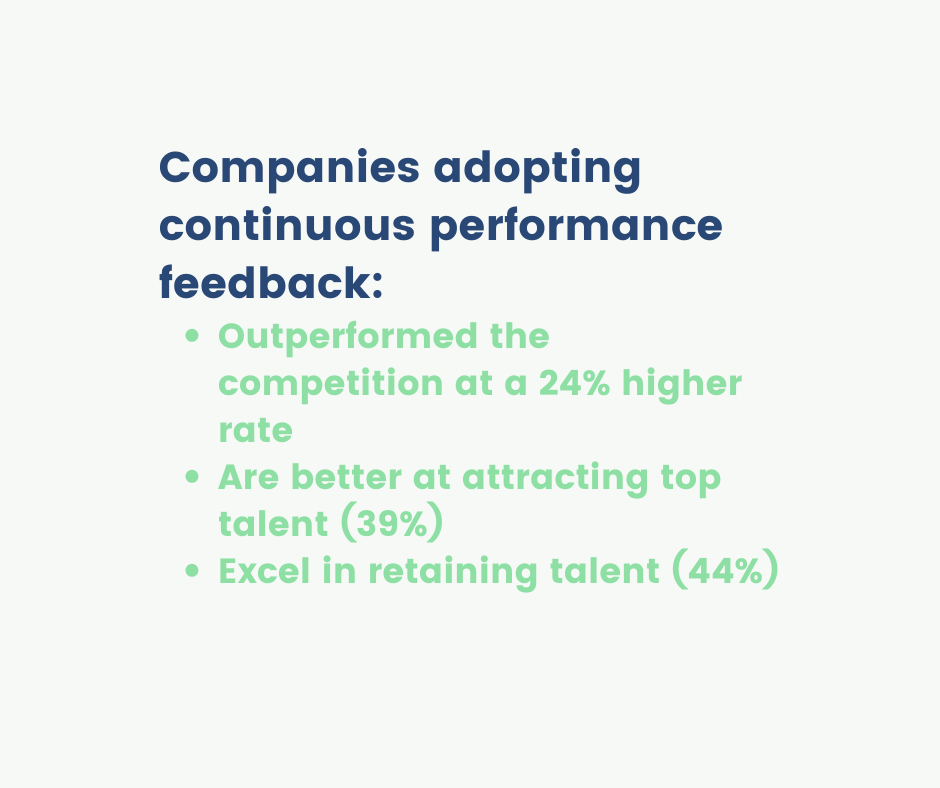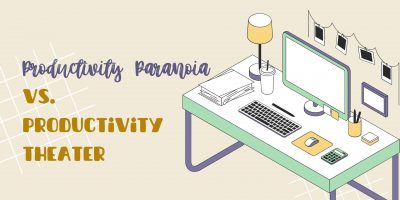
What is Performance Management?
Discover how, if done correctly, effective performance management can benefit both employers and employees.

A relevant review of an employee’s work is essential for the organization’s overall development. Continuous feedback from the supervisor can boost the employee’s performance and benefit the whole business.
Thus, an effective performance management model, which typically includes performance appraisal and employee development, is one of the strongest assets of the human resources department.
Still, many managers struggle with the effectiveness of a good performance management model.
A Gartner Performance Management Benchmarking Survey showed that 81% of HR leaders are making changes to performance management systems within the companies.
Furthermore, according to Gallup, only two in ten employees say their performance is managed in a way that motivates them to do outstanding work. The research also states that 74% of the employees receive a performance review once a year or less often.
According to the latest performance management statistics, the traditional annual appraisal model doesn’t bring tangible results or strengthen the hierarchy in the company. Also, it can directly affect the worker’s physical and mental health.
22% of employees have called in sick rather than face a performance review, 35% have complained to their peers, and a shocking 15% have even cried.
Therefore, companies need a more effective performance management model to bring ongoing dialogue between the supervisor and the worker by setting individualized goals, reviewing progress, and providing learning opportunities.
Hence, this article will outline the performance management models that will work best for your company.



The contemporary performance management process is built on a chain of continuous feedback.
It requires the cooperation of the HR team, executive leadership, middle management, and the employees. Thus, even though the HR department is responsible for the execution, the leadership team’s business goals and the individual employee goals drive the process.
However, that’s not always the case, which causes issues with the model, but before we cover that topic more extensively, let’s focus on what is a performance management model.
A performance management model is a structured framework or a process that organizations use to monitor, assess, and enhance the performance of their employees and teams.
There are different performance management models to consider when designing performance management assessments or a performance plan. By implementing the right model and performance management software, managers set annual objectives for their team members and identify high-performing individuals and employees that require improvement.
Furthermore, a proper performance management guide significantly impacts the staff’s motivation to do better in their assignments.

The key components & elements of a performance management model include:
Continuous feedback is all about the 5 Cs,’ and it must always be:
|
Clear |
Employees must clearly understand what is expected of them and what improvements need to be brought in. Clear feedback is helpful feedback. |
|
Candid |
Feedback needs to be candid on both ends. The manager and the employee must be honest to ensure effective feedback.
|
|
Continuous |
Feedback works best when it is provided regularly. This way, the employer can ensure employees can course-correct if they go off track and show consistent growth.
|
|
Constructive |
Constructive feedback enables people to reflect on their performance positively and not lose motivation or doubt their abilities.
|
|
Collaborative |
A collaborative process between both parties works towards encouraging and helping the employees grow.
|

Selecting an appropriate performance management model can be challenging as every business has different requirements. However, considering the following factors when choosing a performance management system can make your job easier.
Identify your company’s philosophy and purpose and build them into your corporate culture.
Ensure that objectives are aligned clearly and have a specific purpose that employees can understand. Have managers collaborate with their peers to help them set goals that support company objectives at the individual level.
The performance management software should be easy to use for the employees. User-friendly design and features promote flexibility of use. They wouldn’t require much training time, and the employees can start using the software as soon as it is available to the organization.
When you select a new performance management system, ensure that it doesn’t interfere with the working of any other system. Also, make sure that the chosen model is integrated seamlessly into the existing system so that there is no loss of useful employee data, and the existing modules are compatible with the new ones.
Fostering a continuous learning and growth culture drives employee commitment to the organization. The performance management model should identify the employee’s unique training and development requirements by assessing the competencies so that they can be provided with the relevant training.
Real-time reports from the performance management system help gauge employee performance effectively and timely. It also aids in instant gratification for the employee contribution towards the organization.
Below are some of the best practices many companies adopt with highly effective performance management models.
Choosing the best performance management model to comply with your company’s requirements can be vital for growth and development. Every business is different, so there’s no such thing as a ‘one-size-fits-all’ performance management model that will deliver results for every employer.
Here are a few performance management models that offer a range of approaches to suit different organizational needs and goals. Select the one that aligns best with your company’s culture and objectives.
According to this model, performance management is a continuous cycle that aligns the organization’s strategic aims with the team’s and individual employee’s goals.
Key steps in the process include:
For the model to work, everyone in the company must commit to their role.
Some companies still use the traditional assessment approach, which mainly focuses on reviewing things that have already happened.
According to Gartner, 95% of managers are unsatisfied with traditional performance reviews. A survey by Globoforce finds that 45 percent of HR leaders do not think annual performance reviews accurately appraise employees’ work. Additionally, 42 percent believe that employees are not adequately rewarded based on their job performance.
Management by objectives (MBO) is an approach managers adopt to control their employees by implementing concrete goals that both the employee and the organization aim to accomplish in the immediate future.
It’s important to note that the objectives don’t need to be related. Moreover, they can be decided upon by both managers or human resources leaders and their employees.
The project-based model evaluates employee performance based on individual projects. For this model to be successful:
The high-growth performance management model is based on four elements:
It’s a new approach that suits agile teams in various industries and involves:
Having the right performance management tools results in the company’s overall success.
The software-based model:
A manager evaluates the employee twice over a year. Usually, these appraisals take place in the middle and at the end of the calendar year.
The model:
A more flexible approach that implements regular conversation. It means:
A sense of involvement by the employees in the company’s decisions is one of the benefits of the employee-driven model.
Simply asking team members for their opinions can significantly impact staff engagement and awareness of company processes.
Peer-reviewed performance management gives you an understanding of how your workforce functions based on employee feedback with a few main points.

Successful implementation is the most challenging and the most important part of developing an effective performance management model.
We selected eight cornerstones to help your company implement the performance management model best.
In developing a performance management system, it is crucial to ensure that it is aligned with other human resources systems in the organization. For example, competencies used as the basis for performance management should be the same as those used for recruitment, staffing, and training.
The prominent online marketplace for artisanal products, Etsy, has taken significant steps to offset 100% of carbon emissions from shipping.
Recognizing the environmental impact of the vast number of packages they ship daily, Etsy partnered with 3Degrees, a renewable energy company, to fund verified carbon emission reduction projects. These projects involve activities like protecting forests, supporting wind and solar farms, and developing eco-friendly methods for auto part production.
Etsy’s commitment ensures that the carbon emissions generated by their shipping activities are effectively neutralized.
An organization is more likely to succeed when its leaders:
This is compared to an organization without strong support from top-level management.
Another critical factor in ensuring successful implementation is to pilot test the new process in a couple of units before large-scale implementation. Pilot testing will show if the system functions smoothly and efficiently.
Employees and managers need to be motivated and able to use the performance management system effectively. Appropriate training helps accomplish both of these objectives.
Automation makes managing performance easier by reducing paperwork. Both managers and employees like automated systems. Automation reduces work, makes performance tools accessible to many, and organizes performance data.
Moreover, HR leaders have begun to use generative AI to:
Embrace low authority and promote high accountability. The mindset shift from boss to coach creates room for more questions, richer conversation, and greater development.
Succession plans are valuable in developing employees and keeping talent in the company. It is a way of investing in employees and retaining them in different roles within the company.
Provide opportunities for career planning conversations that will help employees think about their future in the organization.
Before implementing a performance management model, getting familiar with any country’s professional and legal guidelines is essential. Following these guidelines will enhance the defensibility of a system in the face of a legal challenge.

A successful performance management model creates a cultural shift in how people work. A well-structured performance plan with transparent and clear goals that align with the employees’ individual goals benefits the company’s development and growth.
Furthermore, companies adopting continuous performance feedback outperformed competition at a 24% higher rate. Also, organizations with continuous performance processes are 39% better at attracting top talent and 44% better at retaining talent.
After all, employees’ satisfaction and well-being are essential for their performance. It keeps them longer in the company and boosts their engagement and productivity. Thus, a good performance management model is vital to a successful business.
Disclosure: Some of the products featured in this blog post may come from our partners who compensate us. This might influence the selection of products we feature and their placement and presentation on the page. However, it does not impact our evaluations; our opinions are our own. The information provided in this post is for general informational purposes only.
Senior Content Writer at Shortlister
Browse our curated list of vendors to find the best solution for your needs.
Subscribe to our newsletter for the latest trends, expert tips, and workplace insights!

Discover how, if done correctly, effective performance management can benefit both employers and employees.

Most employees and managers dread appraisals, yet nearly every organization still uses them. Is it just a corporate tradition, or do they deliver real value?

How can the gap between employee and employer perceptions of productivity in a hybrid work environment be bridged?

Negative feedback doesn’t have to feel negative. These industry-specific examples show how delivery and intent can turn difficult conversations into growth opportunities.
Used by most of the top employee benefits consultants in the US, Shortlister is where you can find, research and select HR and benefits vendors for your clients.
Shortlister helps you reach your ideal prospects. Claim your free account to control your message and receive employer, consultant and health plan leads.